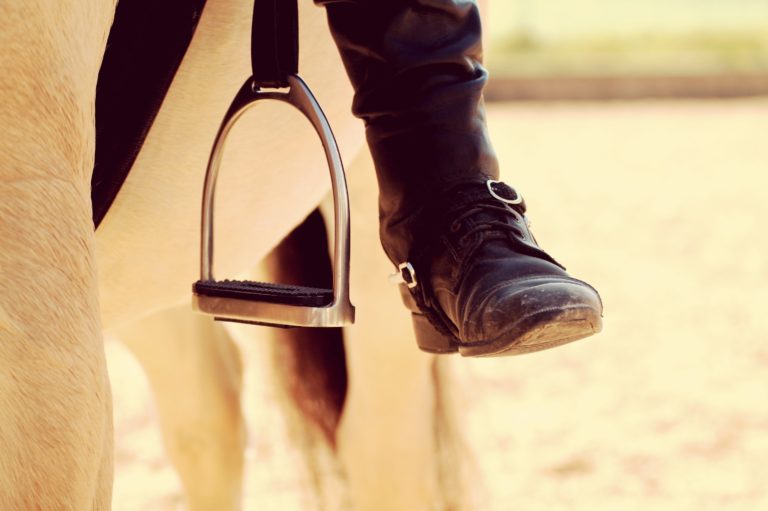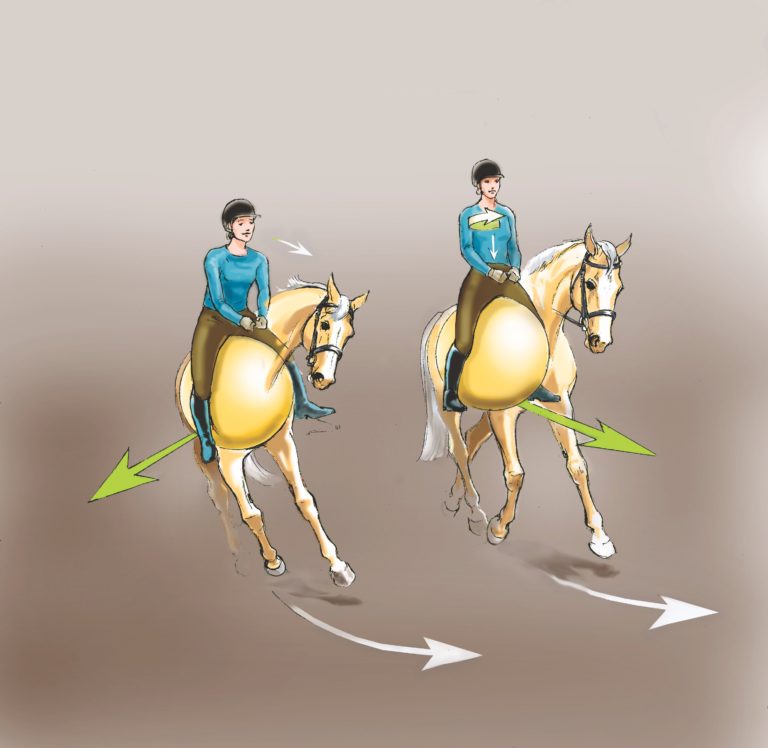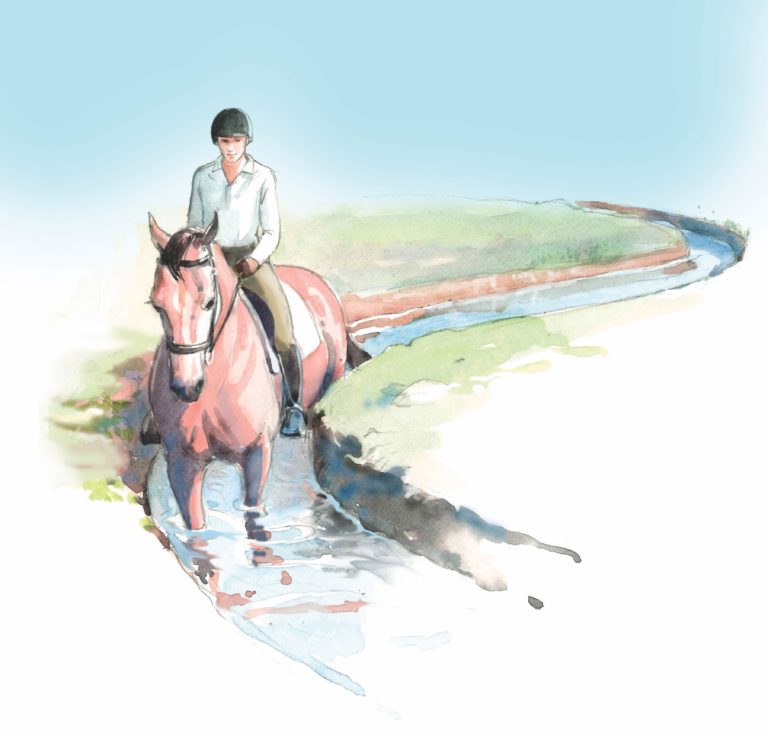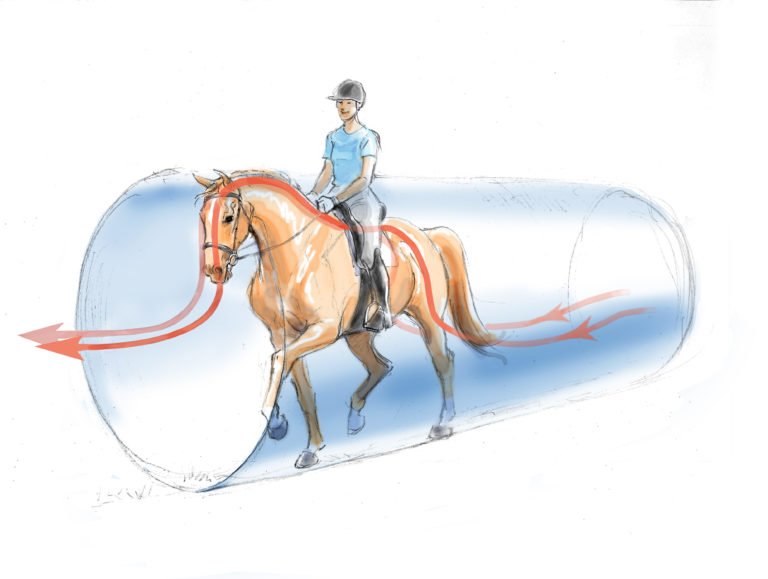In this second article of a special multi-part series, Dressage Today technical editor Beth Baumert continues her exploration of the art and science of educating dressage riders by interviewing another examiner who evaluates instructor candidates seeking certification by the U.S. Dressage Federation (USDF).
This month, she talks with Gerhard Politz, of Flintridge Riding Club in Los Angeles, California. A Fédération Équestre Internationale (FEI)-level competitor and trainer, Politz, who immigrated to the United States from Stuttgart, Germany, in 1987, is a German Reitlehrer FN, a British Horse Society Instructor and a USDF gold medalist. In Germany, he studied with masters such as Egon von Neindorff and Willi Schultheis as well as Gen. Kurt Albrecht, former head of the Spanish Riding School. In 1992, Politz joined the editorial board for the USDF instructor’s manual.
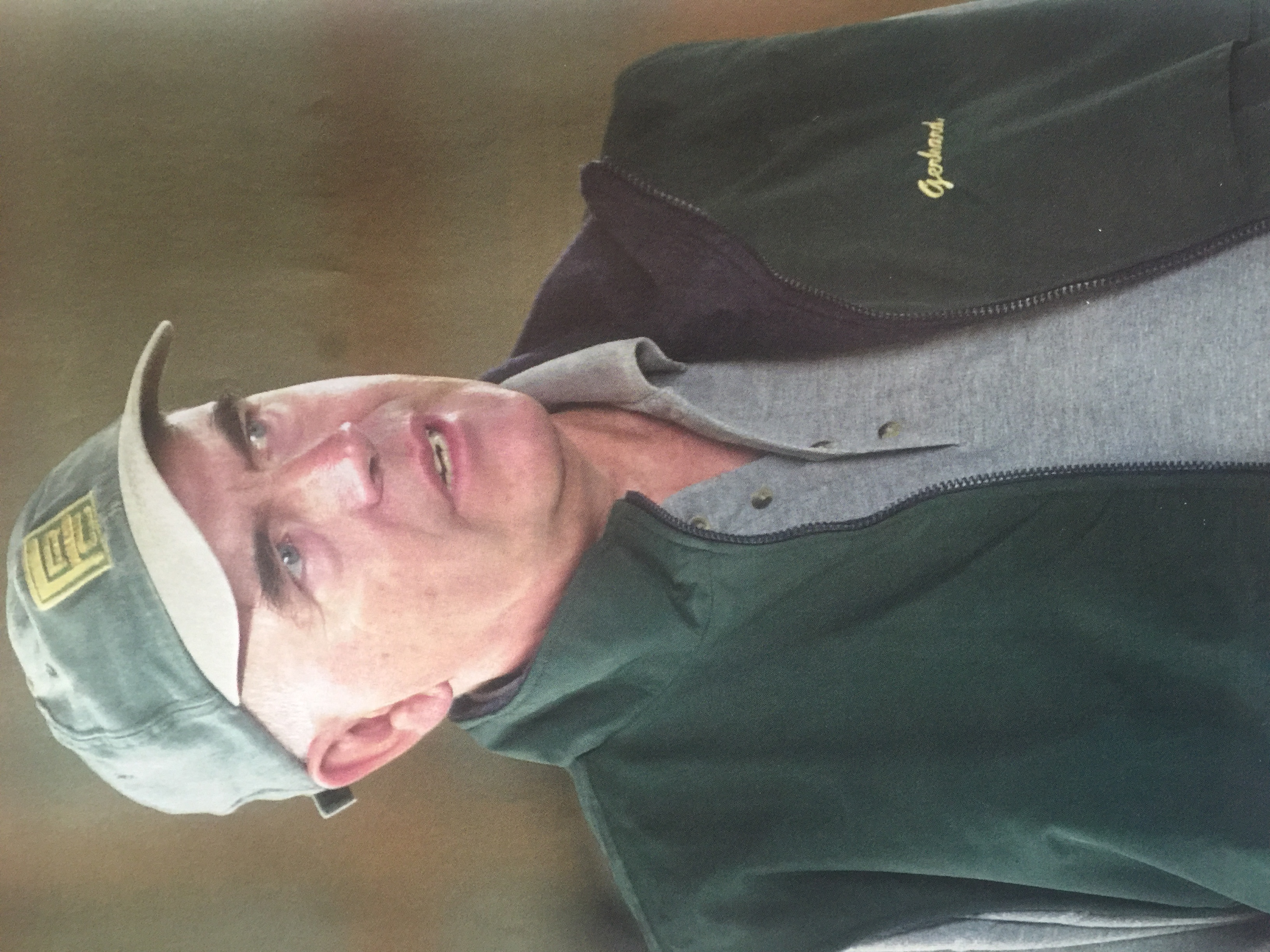
Beth Baumert: In your travels as an examiner for certified instructors, can you tell us some of the most important qualities of a dressage instructor?
Gerhard Politz: Making the correct assessment of his students is crucial to the instructor’s success. The instructor must be able to pick one or two things in a lesson situation that will enable the student to improve and then build up from there. The instructor must know “If you do such and such, many things will fall into place.” That is something you learn only from experience. And that experience includes a very thorough knowledge of the rider’s seat and position and how this influences the horse. Instructors often want to train the horse and are inclined to forget to train the rider. As a result, many riders sit in contorted, stiff, inelastic, unbalanced positions with their hands and legs in the wrong place and wonder why they aren’t effective.
One of the goals of the USDF Instructor Certification Program is to make instructors realize that they must first get their students sitting in good balance. In Germany, riders start with longe lessons, and then they go to group lessons. Maybe they don’t have good horses, but they ride school horses in side reins and learn to sit, drive and steer. They do that for a couple of years, and then they get another school horse. Then, in another two years, they’re ready to have their own horse.
Do you think the best instructors are part psychologist?
Definitely. One important aspect of the psychology of learning is the appropriate use of praise. You can’t always criticize the student. You have to reward even small positive results, especially when the rider has done something that improves the horse’s way of going. Praising at the right moment creates thinking students. For example, the instructor who says “Do you feel how that flying change was different? Was it better? If so, why was it better?” By reflecting on what the student did differently, he learns. I often hear instructors say “Good, good, good!” when it is meaningless. You have to praise at the right moment and say “There! That was it. Can you remember how you did that? Show me that you can do it again.”
You’re talking about the ability to communicate honestly?
Yes, with integrity. Some instructors tell students that they’re doing something well when, in fact, they are not. Praise for the sake of praise is meaningless and dishonest. Everyone craves praise, but it should be deserved. Honest praise is good, but constructive criticism is more conducive to improvement.
What about other aspects of honesty?
Now we get into ethics. Instructors should make sure that they sell horses appropriate to the buyer. Here, people in the United States get a few lessons, and they think they need to buy a horse. So they buy a horse that isn’t suitable. I think instructors are often at fault. They buy horses for their students because they want to have a good horse in the barn. They say, “Well, you ride this horse twice a week, and I’ll ride him for the rest of the time.” I know people who, when they sell a horse, the price includes six lessons or training sessions. They say “Call us if you need help. We’ll reschool the horse if you have a problem.” This is an excellent policy when dealing with people.
That’s an aspect of professionalism?
Right. You should advise your student to buy a horse suitable for that point in his education. Then later the student has to realize that when it is time to sell his first horse to someone else and get himself something better.
You started to talk about communication during lessons. Can you tell me more about that?
Whereas communication is a two-way street, I don’t think lessons should have a lot of talk. In fact, when a student is trying things out, he should feel, not talk. When you are verbalizing, you can’t feel. Feel first, talk later. During the breaks, the instructor can get feedback from the students to make sure they’ve understood what you’ve tried to teach them by asking questions: “Are you clear about why we did that? Are you secure in what we’ve done? Do you feel that you could repeat this on your own at home?” Also give them feedback: “Now your leg is in the right place,” or “Can you feel that when your fists are more upright you can be more flexible in the wrist?”
Another aspect of horsemanship involves safety around horses. Instructors should always keep safety foremost in mind. Murphy’s Law can strike so quickly with stupid things like changing the stirrup length without keeping the foot in the stirrup. We often see riders tightening the girth with loose reins while one leg is up and the rider is leaning down. Some riders put the whip down on the ground while longeing. These small things can have very serious consequences.
In teaching, can you talk a little bit about flexibility and having the ability to change your plan?
I have to say that sometimes I find out that something didn’t work with a particular horse and rider. Then one has to say, “You know what? I just realized that this isn’t going to work for you. Let’s try something else.” I like the idea of a lesson plan, but only if it’s flexible. You have to have lots of plans in mind, and the experienced instructor doesn’t need to think about the plan. It’s all stored in his brain. On the other hand, the fledgling instructor needs to have a plan. Then, if his plan doesn’t work, he needs to scratch that plan and so something else that will work. With experience you can make that choice quickly.
Doesn’t the instructor also need to be flexible and imaginative in the way he teaches skills?
Definitely. Students learn differently. Some do very well to see a movement demonstrated. Others have to analyze step by step with detailed explanations. Others need to have their leg placed in exactly the right position. Using mind pictures is helpful. For example, it doesn’t mean much to some riders to say “You need to make that circle rounder.” But you might say, “Imagine the face of a clock and ride to twelve, three, six and nine o’clock.”
What other instructor qualities do you feel are the most valuable?
I think it’s crucial to have a sense of humor. We all have stories to tell about moments we were humbled. I tell one about a lesson that I had with Willi Schultheis years ago. It was only my second or third lesson with him, and I was riding a horse that knew all the tricks. So he asked me to go on the diagonal and do four-tempis. That wasn’t a problem, so he asked me to go on the next diagonal and do threes. The threes came out perfectly, so he then asked for twos, which were also perfect. Then he said, “Now do ones.” Well, I’d never done ones before, and I asked him what I should do. He said, “Just think of riding a bicycle. Move your legs in rhythm, and he’ll probably do it.” So we went on the diagonal and did 15 ones! I’m thinking, damn, how did I do that? This is pretty neat. Next, Willi wisely said, “Now, go on the diagonal and do fours.” Well, we went on the diagonal, but we did ones again. “I told you to do fours,” he insisted. “Make sure you count it right this time.” So off we went again, but we did ones again. Now I felt really stupid , and Willi started to get loud. “I told you to do fours! Can’t you count?” I’m now quite red in the face and go back on the diagonal thinking I’m going to make a good job of it this time. But we did ones again. Now I’m very embarrassed, and he says, “Last chance. You’ve really got to pull yourself together here and do it right this time.” But we did ones again.
“How do I switch him off?” I asked in desperation, and he nearly fell off his horse laughing.
“The secret is that you ride him once around in counter canter, and then you can start the sequence all over again,” he said. I tell that story, and my students know that I’ve looked like an idiot on a very smart schoolmaster!
Knowing that helps riders work without being afraid of making mistakes?
Fear of making a mistake is one of the biggest hindrances of learning. Everyone makes mistakes, and we should try to learn from them. When riders are relaxed about making mistakes they are more able to experiment to find out what works and try new things… but use methods within the classical system.
What about respect for the system?
There are many roads that lead to Rome, but they must all be the correct way. There are some theories and some paths that are the “garden path” and they don’t go to Rome. If you get stuck on a garden path, you have to retrace your steps and waste a lot of time in the learning process for both student and horse. And you have to undo some training before you can head back to Rome.
Horses, in general, don’t unlearn easily.
No, they don’t, but they are easily conditioned, so we must absolutely adhere to the system. We work within the structure of the pyramid of training, but within that framework there are infinite possibilities. For example, we use individual approaches to each specific horse, and there are an infinite number of ways we can combine exercises.
If we practice things always as they are demanded in the test, we become very good test riders. Test riding is quite an accomplishment, but the horse is best trained when we are more imaginative and utilize those different roads leading to Rome. If someone does a poor shoulder-in, you don’t keep practicing shoulder-in down the rail, but find different approaches to improving it. What works with one student might not necessairily help you with the next one. When you notice it, you must say to yourself “Ah ha, I have to have a different approach because this method is meaningless to this particular student.”
Do you think that some riders work better under pressure?
I firmly believe that there should always be pressure in a lesson, but it should not be overdone. Knowing that a person, at best, retains 10 to 15 percent of what they are told in a lesson, one has to sometimes stress a point in order to make it really stick. Don’t stress the horse but make the student aware of how important a particular segment might be. But repetition mustn’t be boring. Again, the instructor must approach each subject from several different angles—he repeats without doing exactly the same thing.
How about having goals and a vision for your students?
Students should have long-term goals and short-term goals, and all goals need to be realistic. A dream may or may not be a realistic goal. When the rider looks at his dream, he should be clear about the little steps that lead to the overall result. He may have to be content to feel “I had a dream, but at this point I cannot realize my dream. What can I do now?” That has also to do with the integrity of the instructor and his ability to be realistic. The instructor has to be clear about what needs to be done in order to reach the goal. If he needs to be able to do A, B, C and D, the instructor must ask the rider “Can you do A completely?” Perhaps so, but he can only do half of B, none of C, and D is nowhere in sight. Now having assessed the situation, let’s find out what to do in order to be master of A, master of B and maybe half of C. The next step would be to do C completely and then tackle D. If you skip steps in the process, it will be detrimental to you and your horse, and your dream will never be realized.
This sport takes patience.
It does. I have a lot of patience, but I also want to see a result. You have to have the kind of patience that will always inspire students to be better. You need tenacity. In a lesson situation, don’t let the rider go away without his moment of success—even if it’s only a small thing. You need the “Three Ps” in dressage: practice, perseverance and patience.
What do you recommend for people who live in areas where there are no qualified instructors?
That’s a hard one. They should find the best instructor in the area, but amateurs can also actively encourage instructors to further their education by going to seminars for the USDF instructor certification. The local instructor can simply go to the seminars and exchange ideas with the workshop leader and his peers. If instructors want to progress in their learning, they have to pick up ideas and make them their own. I do that all the time. I see something that I think is a fantastic idea, and boom, it’s mine. I think that the certification program hasn’t been exploited by many instructors in remote areas.
Is there anything the students can do immediately? Look for the best instructor based on the qualities that you’re outlining now?
Yes. One other quality I haven’t mentioned is for students to look at the instructor’s horses and see if they’re happy. They may not be the most successful horses at the show. A great show rider is not necessarily a good trainer and teacher. There is a vast difference. Some people can ride a test very well and steal every point, but when they have to solve a problem, they can’t do it. So someone who is looking for an instructor should ask himself: Are the horse going in a happy manner? Are they chewing on the bit? Are the tails quiet, the ears up? Do they have spur marks on their sides? Go and watch a lesson. How is the rapport between the instructor and his students.
Let’s talk about the qualities of a good student. Given the same opportunity—same amount of money and horse talent—one student will forever be a beginner and the other will be a champion. Why?
Students are never equal. They all have different qualities, and sometimes it’s quite enough for them to just enjoy riding. They don’t necessarily all have the ambition to become stars in the show ring, and that’s fine. They don’t need to feel inferior about that. I would not say one student is preferred over the other. But if you do want to be a competitive rider or a professional, you have a serious responsibility to do right by your horse. And if you have talent, you have even more responsibility because never has anyone become a good rider through mere talent. Talent is 70 percent hard work. If you don’t work to get better, your talent will be mediocre at best. That’s just like a good horse. You can have a horse that has a 10 for gaits, but he can’t run through the Grand Prix on the merit of his gaits. He must be educated. If you don’t go through the rigors of training correctly, your talent is wasted.
Both the instructor and the student must have the ultimate love and respect for the horse. That doesn’t mean that you’re never strict with him, but you must get cooperation in the nicest possible way. The love and respect is where it all hinges.”


